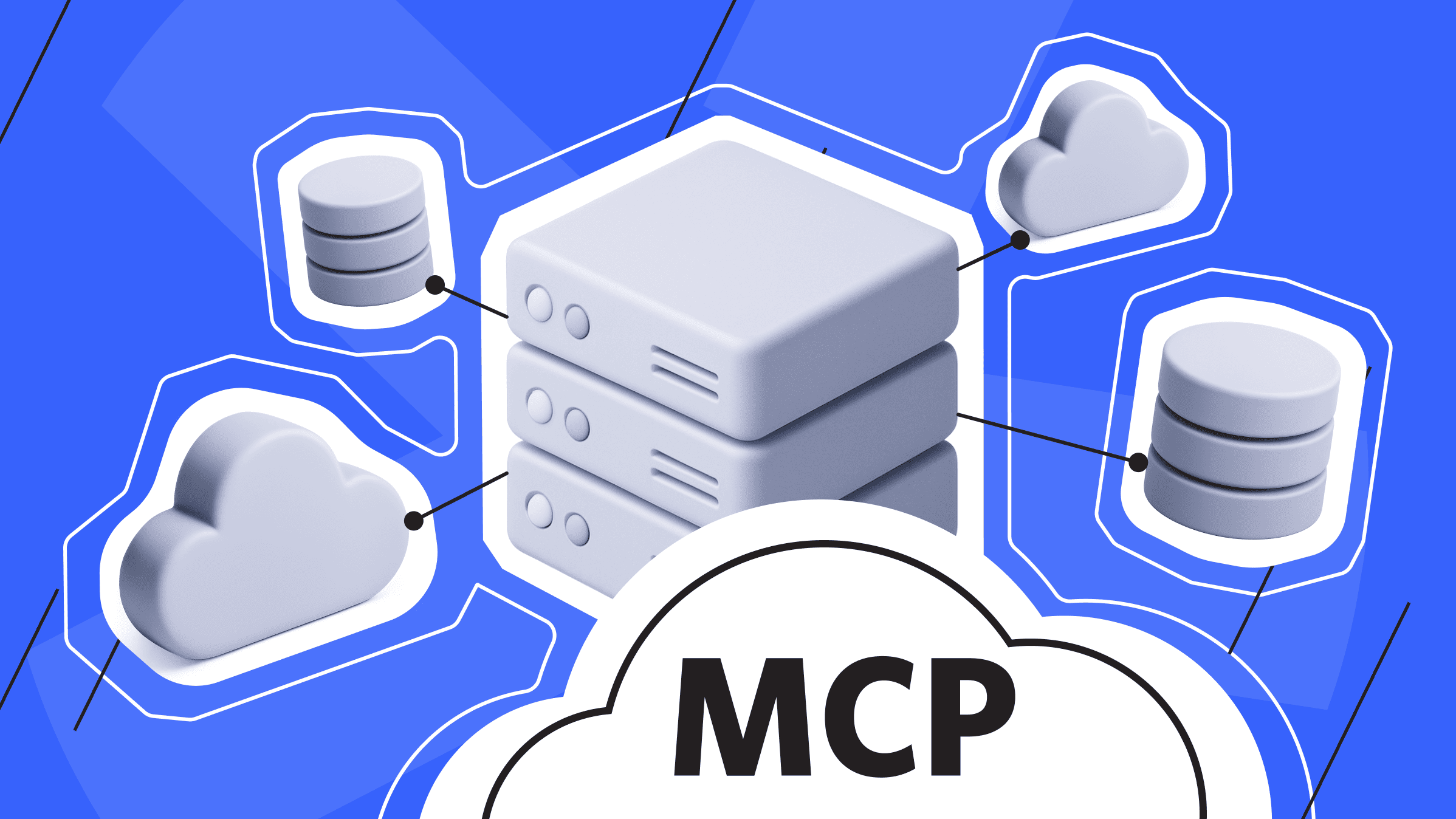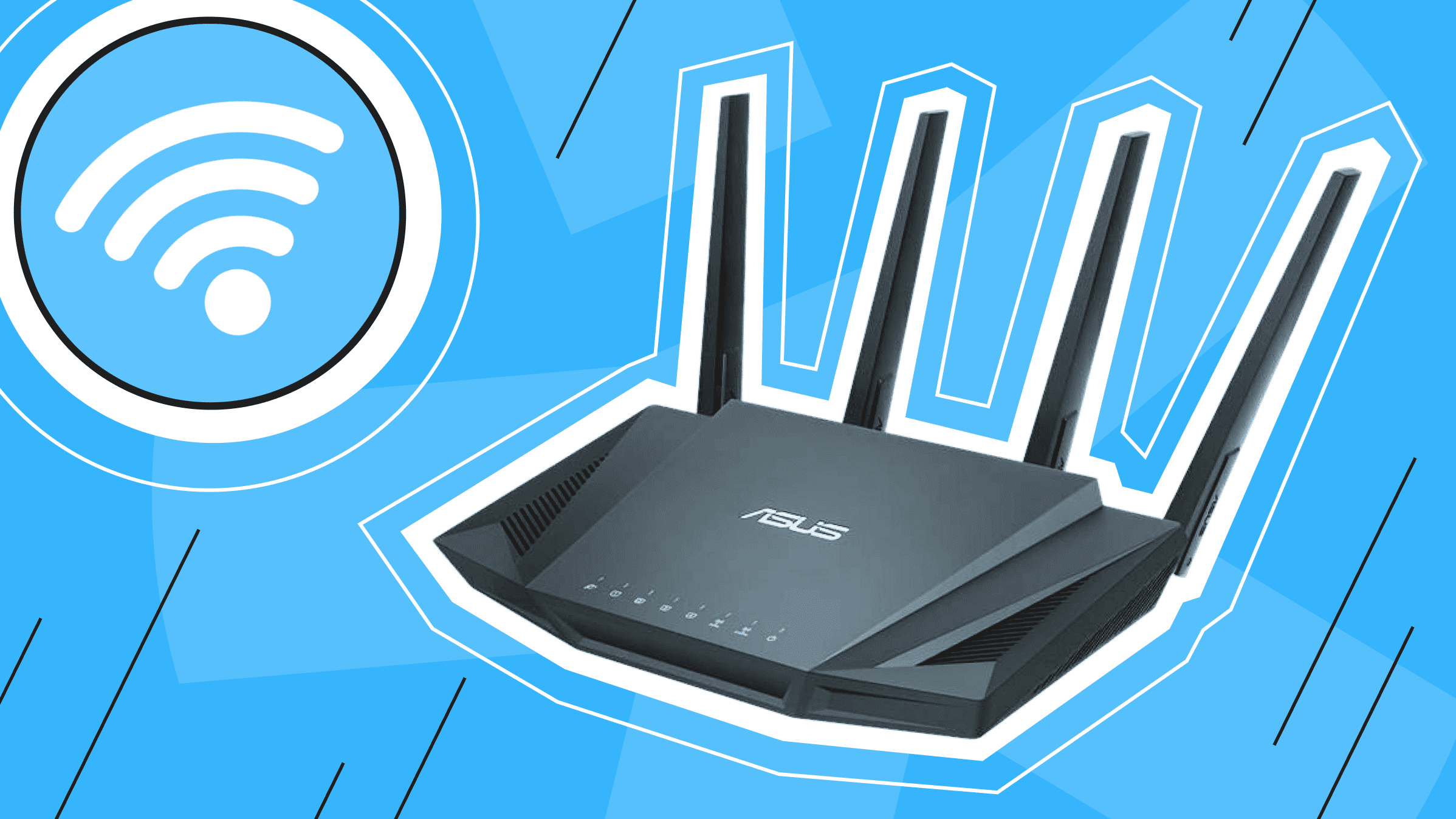
You might come across the term Model Context Protocol (MCP) in modern AI blogs and wonder: What problem is an MCP server supposed to solve?
That single question anchors this guide. We will unpack the concept in everyday language and show how the Model Context Protocol helps large-language models stay grounded — without drowning readers in jargon.
What Is an MCP Server?
An MCP server is a microservice that sits between an artificial-intelligence model and the messy real world of data stores, message queues, and paid APIs. Inside a chatbot, the model can predict text, but it cannot natively open a spreadsheet, read an inventory table, or query a weather endpoint. The MCP server bridges that gap by receiving a structured request, translating it into the correct external call, then funneling the answer back so the model can reason over fresh facts.
Formally, an MCP server is defined as the service node that implements Model Context Protocol functions over HTTP/2 or Google Remote Procedure Call (gRPC). In plain terms, it’s the traffic cop that keeps smart assistants from running blind. If someone asks, “What is an MCP server?” the shortest answer is that they are context gateways — thin yet disciplined.
Here’s an example. A voice assistant asks, “How many blue hoodies are in warehouse 17?” The model sends the descriptor inventory.quantity(color=blue, warehouse=17) to the MCP server. The server checks the policy, runs a SQL query, returns the count, and logs the entire exchange for auditing.
Formal View
Here’s a quick look at the formal structure of an MCP server, broken into layers that handle input, processing, and output:
- Ingress layer — gRPC/HTTP endpoint where the model posts descriptors.
- Adapter layer — Plug-ins for SQL, Amazon Simple Storage Service (S3), vector search, or Representational State Transfer, each sandboxed.
- Egress layer — Serializer that returns JSON/Protobuf, adds provenance, and updates the ledger.
Because the flow is symmetrical, many models can share a single MCP server cluster without leaking data. That multi-tenant capability is why architects rank these nodes among the best MCP servers for horizontal scaling.
VPS for Your Project
Maximize your budget with our high-performance VPS solutions. Enjoy fast NVMe, global reach in over 40 locations, and other benefits.
The History of MCP
The story begins in 2019, when the first GitHub commit tagged Claude MCP appeared as a stop-gap bridge between a chatbot and an unreliable customer relationship management system. By version 0.5, descriptor validation plus tagged memory pools had already transformed that scrappy helper into a production-worthy MCP server.
January 2021 marked the next milestone: the maintainers donated the specification to the Cloud Native Computing Foundation and released version 1.0 with a stable API. Enterprise demand quickly followed, and the core team introduced a hardened MCP management service that paired auto-scaling blueprints with audit-grade logging to satisfy PCI DSS and HIPAA requirements.
Interoperability soon became MCP’s signature feature. A quarterly conformance suite guarantees that any descriptor running on one MCP server executes unchanged on another. Freed from lock-in worries, vendors now differentiate themselves based on latency, plugin breadth, and upgrade smoothness. Tech blogs publish seasonal league tables ranking the fastest and most extensible builds.
To keep momentum, the project adopted an 18-month long-term support cadence and added native OpenTelemetry hooks, turning Claude MCP nodes into first-class citizens of modern observability stacks. A lightweight plugin registry followed, encouraging community-driven adapters, descriptor packs, and security rules under permissive licenses — cementing MCP as a stable yet rapidly evolving layer of the cloud-native ecosystem.
How an MCP Server Works

Picture a tiny post office in front of all your databases and APIs. A letter (your request) arrives, and the clerk reading the envelope already knows three rules: who may read, who may write, and who holds extra privileges. That clerk is the MCP server node.
Forget the spaghetti diagrams — you can think of it as a stubborn reverse proxy that double-checks every stamp and tracks every parcel. No SQL leaks past the front desk, and no caller grabs memory it never rented.
Tagged Architecture
Every piece of data the node stores or forwards carries one of three tags: READ, WRITE, or PRIVILEGED. The tag travels with the data like a luggage sticker. When a call comes in, the node checks the tag before it even talks to storage. If the tag and the caller’s role don’t match, the parcel goes straight to the “return to sender” shelf. There is no secret back-door override; tags live inside the descriptor itself, not in a separate access control list file that might drift.
Descriptors Instead of Raw Paths
A newcomer often types customer.balance into a client and wonders why the node answers so quickly. Under the hood, that string is not an SQL table. It’s a descriptor pointing to a manifest entry. The manifest is a boring YAML list kept in the container image. For each descriptor, the manifest specifies which pre-written query template to run, what parameters to bind, and which tag to expect on the result. Because templates are hashed at build time, runtime code never touches “SELECT *.” Your model code just asks for the descriptor and waits.
Message-Oriented Input/Output
Adapters (those little plugins that speak HTTP, gRPC, or Message Queue) don’t hand the node a raw byte stream. They frame the bytes into messages with a tiny header: ID, length, checksum. This allows the node to retry the same message if the downstream flakes, slow down if the receiver gasps, or trace it across hops. Think of each message as a self-addressed stamped postcard; if the line is busy, the postcard waits in a queue, and nobody loses context.
Firmware Microcode
You can ship a small .mic file to the running container and tweak limits, masks, or default tags without building a whole new image. The node’s bootstrap loads microcode modules at startup, then watches a directory for new ones. A module is usually under fifty lines of Lua-ish syntax. Drop it in, and the node applies the rule set instantly. If the rule set doesn’t work, delete the file, and the node forgets it.
Managed Dedicated Server
Full power, zero hassle. We handle setup, updates, monitoring, and support so that you can focus on your project.
Process Slots and the Weighted-Fair Scheduler
The node spawns workers, but not one per connection — that would starve small devices. Instead, each chat thread or API call becomes a session. A session owns a short descriptor queue, a context window, and a token budget. Tokens represent expected CPU time. A weighted-fair scheduler allocates CPU slices based on tokens: latency-critical sessions get more, background reports get fewer.
Memory Slabs
The allocator doesn’t hand out raw malloc blocks. Memory lives in slabs created at boot: read-only, mutable, or system. Handles remember which slab they came from. If code running from a mutable slab tries to scribble in a read-only slab, the hardware trap fires. The node catches it and prints a red warning straight into the MCP tools dashboard. Reviewers love that demo — they flip one flag, run a fuzz test, and watch malicious writes turn into harmless red flashes.
A Walk Through a Single Request
Here’s what happens, step by step, when a single request comes in and how the MCP server handles it:
- The client sends a JSON request through the HTTPS adapter: a secure communication channel that receives data from the user or another system.
- The adapter packs the received data into a structured internal message, allowing the system to process the request clearly and consistently.
- The scheduler places the message into the session queue, where a session groups all actions from a single user or request to manage them sequentially and efficiently.
- A worker process extracts the descriptor, for example, customer.balance, from the message. A descriptor is a special pointer to the required data or operation.
- The manifest maps the descriptor to a pre-verified, safe SQL template; the database query is prepared and checked in advance to avoid errors and vulnerabilities.
- The SQL template is executed in the database with minimal necessary permissions, enhancing security by limiting the query's access rights.
- The query result is tagged with a READ label and passed back to the system, where the tag helps control how the data can be used downstream.
- The adapter unpacks the internal message, converts the result to JSON, and sends the response to the client, delivering a clear, easy-to-handle answer.
At no point does user code craft SQL, touch heap it shouldn’t, or bypass tags. Everything is visible in logs that beginners can read: timestamps, descriptor names, and token counts. If you push a bad microcode patch, the node refuses to load it and prints the line number. If you exceed your token budget, the scheduler pauses your session for a tick and resumes others.
Key Features of MCP

Each of these features was designed with clarity and safety in mind, so even newcomers can deploy an MCP server without wading through layers of vendor-specific complexity.
Transaction Processing
When a bot books a flight, charges a card, and emails a receipt, the server wraps all three actions into a single atomic frame. If the mailer fails, the payment is reversed too, mirroring full atomicity, consistency, isolation, and durability semantics across totally different systems. Under the hood, the rollback log lives in a ring buffer, so even a sudden power cut causes the bundle to be replayed or canceled on restart. This “all-or-nothing” rule is why hardened images remain popular with regulated fintech teams that need to prove every dollar’s path.
Integrated File and Database Systems
One descriptor domain-specific language (DSL) covers object stores, storage servers, SQL, NoSQL, vector search, and even crusty Simple Object Access Protocol gateways. Because every adapter writes the same framed messages, operators can graph throughput, error spikes, and cache hits side-by-side inside MCP tools, which come with pre-wired Grafana boards. Need to burst to S3 during a traffic surge? Just drop in a YAML snippet, reload, and the adapter shows with health probes already exposed.
Built-In Reliability and Security
All policies are protected by a special digital signature — like a seal confirming the rules are genuine and haven't been altered. Updates to the rules are accepted only if the signature is valid. To prevent the system from getting stuck or malfunctioning, safeguards are in place against such errors. Important security keys are stored securely, so no one can accidentally or intentionally overwrite them. All actions are logged and copied to multiple locations to ensure nothing is lost.
The rules are edited in a program that resembles familiar Microsoft tools, so engineers with prior experience can quickly get up to speed. The rules engine strictly enforces that everyone has only the minimum necessary permissions, helping avoid mistakes and protecting the system from incorrect settings.
Industries That Rely on MCP

The examples below show how very different sectors lean on the same descriptor DSL, framed messages, and policy manifests to keep data consistent and auditors happy:
- Banking assistants. Clusters of MCP servers let chatbots quote balances while journaling each read for auditors. Because every descriptor call is tagged READ and paired with a rollback log, regulators can replay conversations step-by-step. Banks also pipe these logs into security information and event management (SIEM) tools without changing a line of bot code, cutting integration time from weeks to hours.
- Telecom care. Bots fetch billing data via descriptors without exposing entire tables. A single account.statement descriptor returns the past six months, automatically filtered to the caller’s region. MCP’s message framing smooths traffic spikes after handset launches with back-pressure, so care centers see fewer timeouts even during midnight firmware drops.
- Healthcare triage. Adapters redact identifiers before lab results reach the model, ensuring compliance with HIPAA. A microcode patch can tighten redaction rules within minutes when new privacy guidelines appear, keeping clinical chatflows live while compliance teams update policy manifests in parallel.
- Retail kiosks. Edge devices run slim MCP server nodes, so inventory checks work even if the wide area network drops. Descriptors cache stock counts locally; once the connection is restored, a background reconciler merges deltas upstream.
- Gaming. Studios embed a free MCP server in build pipelines to drive NPC dialogue from markdown. Writers edit quest text, commit to Git, and a CI hook regenerates descriptors.
- Public sector. Emergency portals scale horizontally through cloud-hosted replicas managed by commercial MCP management services. When wildfires spike traffic, the orchestrator spins up extra nodes, each inheriting the signed policy manifest. Citizens see stable response times, and after-action reviews provide a complete descriptor audit trail for every request processed during the crisis.
Dedicated Server with GPU
Built for performance. Get raw computing power with GPU acceleration — perfect for AI, ML, and rendering workloads.
Managing an MCP Server
Running an MCP server in production is less about heroic shell commands and more about routine hygiene — good interfaces, predictable automation, and clear signals when something drifts. The elements below make up the day-to-day toolkit for operators who keep nodes healthy at scale.
Admin Tools and Interfaces
A typical admin session starts in the web console bundled with MCP tools. The dashboard displays real-time health checks, token budgets, adapter latencies, and signature status for every loaded manifest. When deep diagnostics are needed, engineers switch to the MCPctl Command-Line Interface to tail deterministic logs that label each event with a session ID and descriptor name, shrinking root-cause hunts from hours to minutes. For repeatable edits, a JSON manifest editor with schema validation prevents typos from ever reaching production.
Supported Programming Languages
Official software development kits for Python, Node, Go, Java, and Rust expose the same descriptor API, so a mixed-language microservice fleet still talks to the node in one voice. Community ports in Swift and C# round out mobile and Windows targets. Tutorials on how to build an MCP server walk newcomers through Docker Compose dev clusters, Helm charts for Kubernetes, or bare-metal systemd units. The consistency of the API means a proof-of-concept chatbot can graduate to a high-traffic cluster without rewriting glue code.
Scaling, Backups, and Upgrades
A single MCP server can handle heavy traffic — thousands of requests every second — but real-world traffic isn’t constant. Some moments are calm, others spike. To keep things running smoothly, several servers run simultaneously, with a load balancer distributing work between them. It also ensures each user’s session sticks to the right server, so conversations don’t get lost halfway through.
Every hour, the system backs up key files (including manifests and logs) to secure storage that can’t be changed. Teams regularly test recovery procedures to ensure everything can be restored and running in under five minutes if something breaks.
When it’s time to update the servers, the new version doesn’t go live all at once. It first runs on just a few machines. The system watches how it behaves, looking at speed, errors, and other key signals. If everything works well, the rest of the traffic is switched over. If not, it quickly rolls back to the older version.
Observability Stack
Every node exports OpenTelemetry traces, Prometheus counters, and JSON logs by default. Cloud operators funnel these streams into central SIEMs that trigger alerts on quota breaches or unusual descriptor mixes. Some forward trace spans into a large language model that summarises anomalies, giving teams a plain-English recap of what went wrong — AI watching the AI pipeline, grounded in authoritative server data.
Final Thoughts
So, what are MCP servers in practice?
Basically, they act like traffic cops for both your data and your AI. Tags declare what each request may touch, descriptors steer it to the right backend, and an atomic frame rolls everything back if one step misfires. Those guardrails explain why hardened builds keep topping benchmark charts.
Spin up a node on your laptop, deploy on a VPS, or rent a managed cluster for mission-critical traffic, and the promise remains the same: an AI (or any other client) sends a question, and the server returns checked, tidy context with near-perfect uptime. The rules are so clear that developers, operators, and auditors can share one playbook — freeing everyone to focus on building smarter models instead of chasing data-pipeline bugs.
Dedicated Server
Get smooth operation, high performance, easy-to-use setup, and a complete hosting solution.
From $75.00/mo

